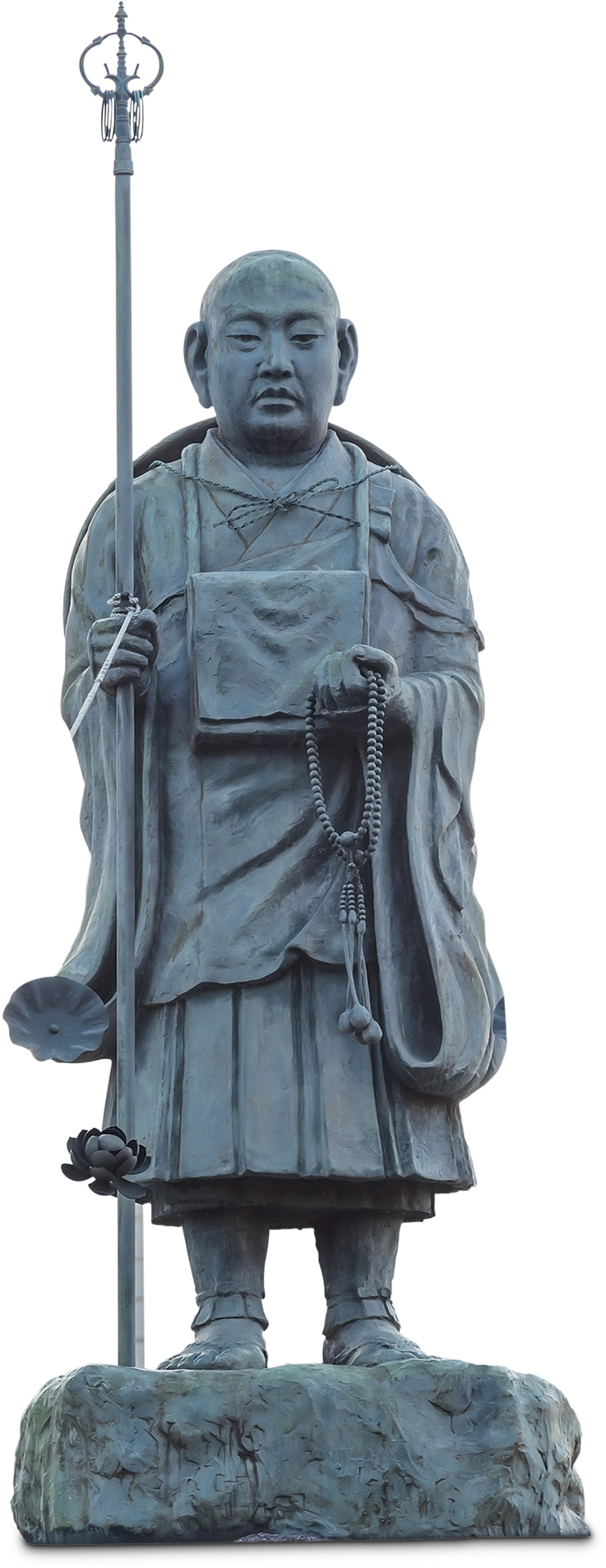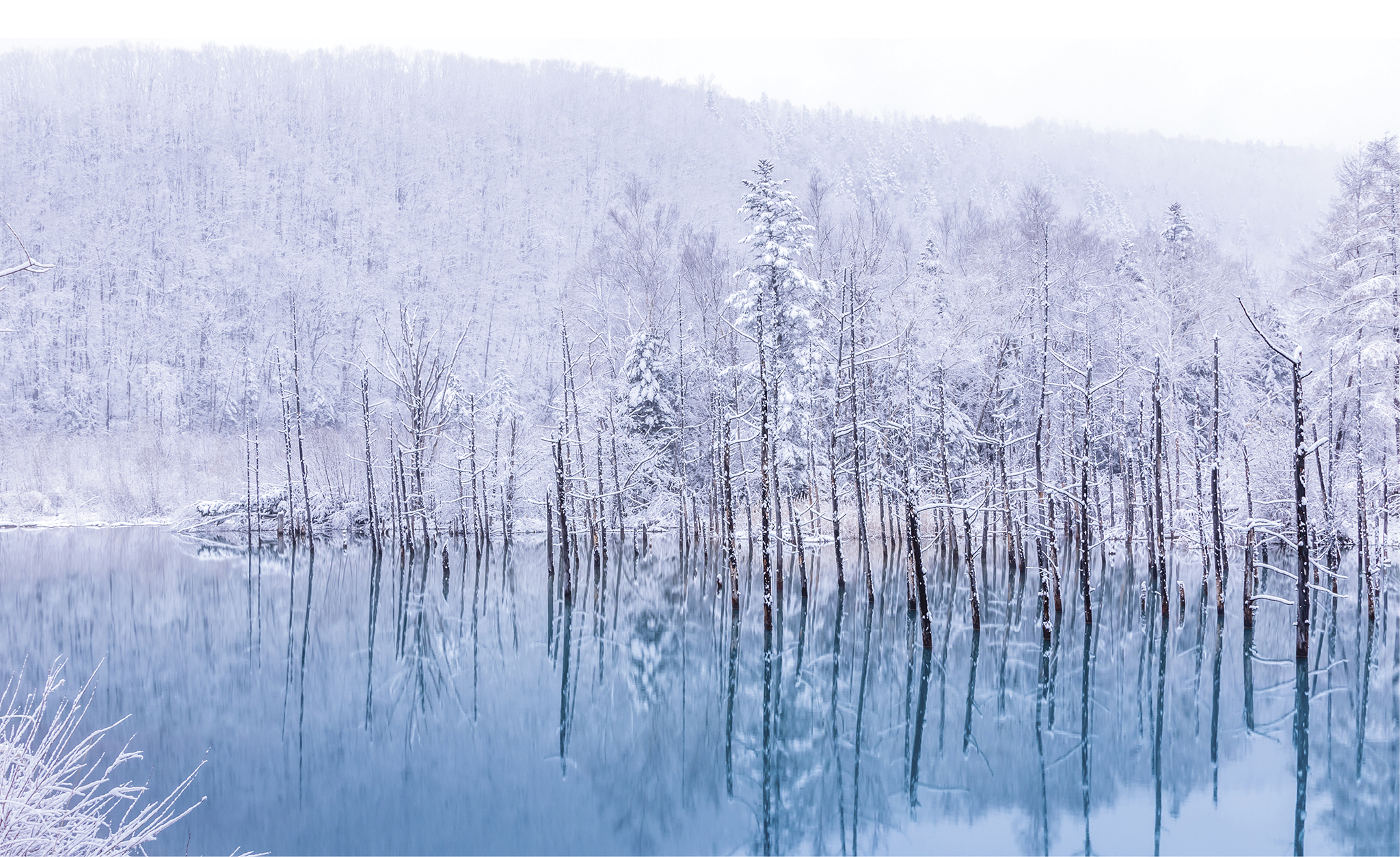巡礼の旅と道筋
PILGRIMAGES AND PATHWAYS
Seeing Japan from a new perspective
With mountains covering most of Japan, travel was historically done mostly on foot. During the Edo Period, feudal lords were required to travel to Edo (present-day Tokyo) every two years—arduous journeys that included long processions of samurai retainers and attendants traveling on official roads like Nakasendo and Tokaido. For commoners, travel was mostly forbidden, but an exception was made for religious pilgrimages to sacred sites, making these routes wildly popular. Today you can set out on one of these pilgrimage routes as a way to connect with Japan’s past and experience the islands’ varied countryside—and maybe even get in touch with your spiritual side as well.

D Left to right: Gokurakuji in Kamakura (Kanagawa Prefecture) is a stop on the Shikoku 88 Temple Pilgrimage; pilgrims traditionally dress in white.
Step into Spiritual Japan
Pilgrimages today are as much about the journey as the destination. On the Kumano Kodo in the Kansai region you can hike a 1,200-year-old network of trails in the dense forests of the Kii Mountains, following in the footsteps of religious pilgrims and members of the imperial family, who considered Kumano a “Buddhist Pure Land.” Listed as a UNESCO World Heritage Site, the Kumano Kodo’s various routes offer many options, including visits to the Grand Shrines of Kumano or Ise Jingu, sleeping in a Buddhist temple atop Mount Koya, relaxing at an onsen, or seeing natural wonders like Japan’s tallest waterfall.
Shikoku’s 88 Temple Pilgrimage honors charismatic Buddhist monk Kobo Daishi, who in the 9th century established the Shingon sect of Buddhism on Mount Koya. The pilgrimage links 88 temples on a 870-mile- (1,400-km-) long circuitous route that takes up to 60 days. Ohenro-san (the name for the pilgrims on this route) are traditionally clad in white with cone- shaped hats and walking staffs, topped with a little bell to help keep their mind on the present. Nowadays many henro complete the circuit on chartered buses, but for a truly unique travel experience, set out on the trail on foot.
Be More Japan Pilgrimages AND PATHWAYS

KOBO DAISHI
Be More Japan Pilgrimages AND PATHWAYS
embark on a long-distance walk

D Daisetsuzan National Park in Hokkaido is Japan’s largest national park.
There’s no better way to see the country beyond the big cities than to put on your hiking boots and set out for a long walk. There are all kinds of landscapes to explore, so take your pick of the trails crisscrossing the country and enjoy the breathtaking landscapes they offer. For a little bit of everything, Daisetsuzan is Hokkaido’s most spectacular national park, full of volcanic peaks, forests, river gorges laced with waterfalls, and the challenging 34-mile- (55-km-) long Grand Traverse trail. Meanwhile, the 435-mile (700-km)Michinoku Coastal Trail is Japan’s newest footpath, hugging Tohoku’s coastline with its rugged cliffs, marine scenery, beaches, and fishing villages. In central Honshu’s Japan Alps, Kamikochi is a popular base for day and extended hikes, while the stretch of the old Nakasendo highway between Tsumago and Magome is like taking a step back in time, as you journey though old post towns that once catered to feudal lords and samurai.

D Kamikochi’s wild scenery attracts hikers from all over Japan.
